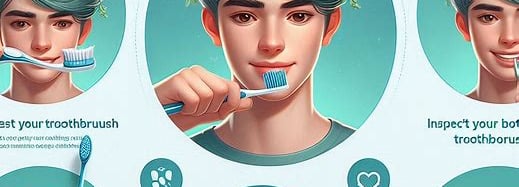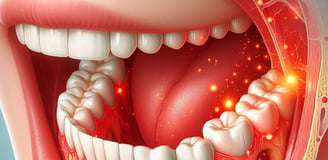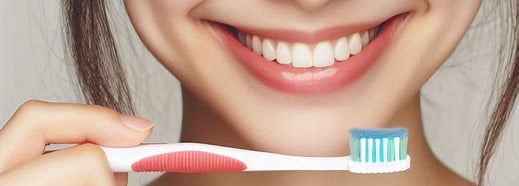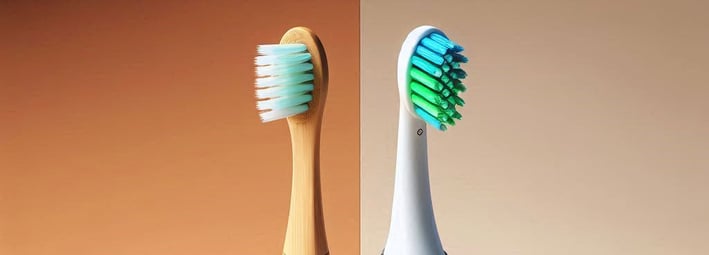Help keep this website stay online by supporting us in ways you can!
Hidden Dangers of a Scratched Toothbrush: Cause Sores, Infections, and Swelling
BLOG
6/30/20243 min read


Introduction
Maintaining good oral hygiene is essential for overall health, but the tools we use can sometimes cause unexpected harm. A scratched or damaged toothbrush can lead to painful issues such as sores, infections, and swelling on the inner jaw. In this article, we'll explore how this happens and provide solutions to avoid these problems.
Personal Experience
For a long time, I suffered from frequent swelling in the inner lining of my jaw. I couldn't figure out the cause until I closely examined my toothbrush and noticed scratches on its back. These rough edges were causing abrasions inside my mouth, leading to the discomfort I was experiencing.
How a Scratched Toothbrush Can Harm Your Inner Jaw
1. Physical Abrasion


2. Inflammation and Soreness
As these cuts and abrasions accumulate, they can lead to inflammation. The affected area becomes sore and swollen, causing discomfort. The repetitive nature of brushing means that these areas are continually irritated, preventing proper healing and exacerbating the inflammation.


3. Risk of Infection
The mouth naturally harbors a significant amount of bacteria. When there are open wounds or abrasions, these bacteria can enter and cause infections. The constant irritation from the damaged toothbrush keeps the wounds open, increasing the risk of bacterial infection. This can result in painful sores and swelling that may require medical treatment.
The Process: From Damaged Toothbrush to Inner Jaw Infections
Toothbrush Damage: Over time, especially with vigorous brushing, the back of a plastic toothbrush can develop scratches and rough edges. This damage often occurs due to how you hold the brush.
Contact with Teeth and Jaw: During brushing, the damaged back of the toothbrush makes contact with the lower teeth and inner jaw.
Abrasion: This contact causes physical abrasion, leading to tiny cuts and irritation on the inner jaw.
Inflammation: The repeated rubbing of the damaged toothbrush on these cuts causes inflammation and soreness.
Infection: Bacteria enter the open cuts, leading to infections that can cause significant discomfort and swelling.


How to Avoid This Problem
1. Inspect Your Toothbrush Regularly
Check your toothbrush for any signs of wear and tear. If you notice rough edges or scratches, it's time to replace it
I may earn commission as an Amazon associate, from the link below


2. Use a Gentle Brushing Technique
Avoid brushing too hard. Use gentle, circular motions to clean your teeth without damaging your toothbrush or gums.
3. Consider Alternative Toothbrushes
Bamboo Toothbrushes: These eco-friendly options are less likely to develop sharp edges and are gentle on the mouth.
Electric Toothbrushes: Electric toothbrushes often have smoother surfaces and provide a consistent brushing technique that reduces the risk of abrasion.


Conclusion
A damaged toothbrush can lead to significant oral health issues, including sores, infections, and swelling of the inner jaw. By understanding the problem and taking proactive steps, you can maintain effective oral hygiene and a healthy mouth. Regularly inspect your toothbrush, use gentle brushing techniques, and consider alternative toothbrushes like bamboo or electric options to prevent these issues.
Protect your oral health by being mindful of the tools you use and how you use them. If you experience persistent soreness or signs of infection, consult a dental professional for advice and treatment.
When the back of a toothbrush gets scratched or damaged, it often develops rough or sharp edges. These scratches may not be easily visible, so it's important to inspect the toothbrush carefully. During brushing, these edges can rub against the soft tissue inside your mouth, particularly the inner jaw. This constant friction can cause tiny cuts or abrasions on the mucous membrane, the delicate tissue lining the inside of your mouth.

